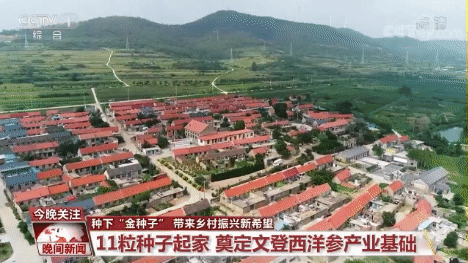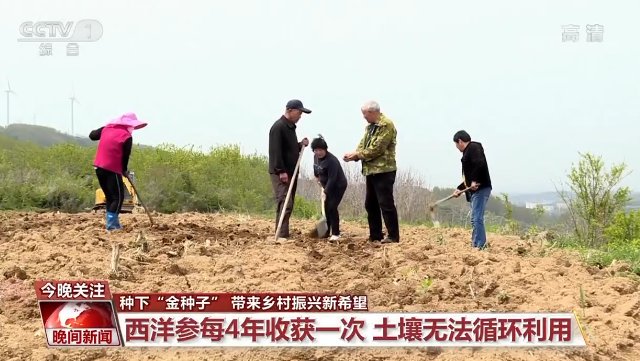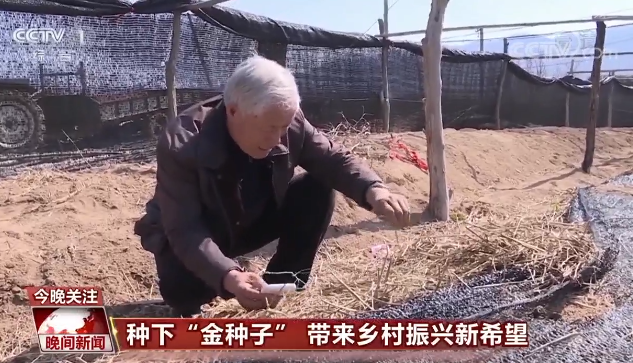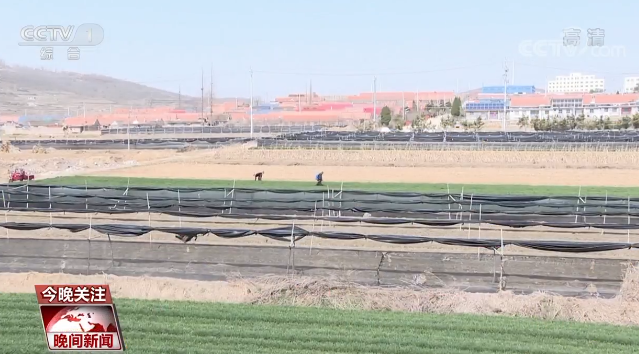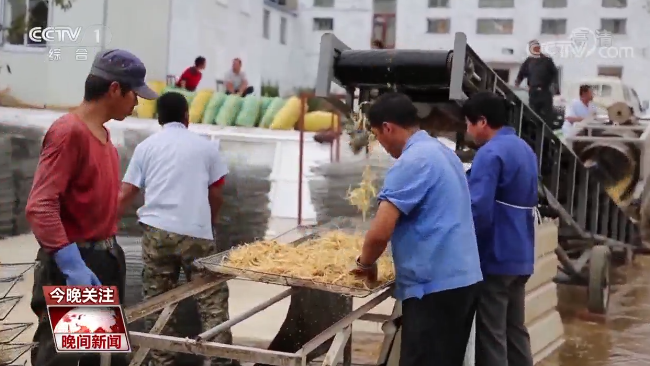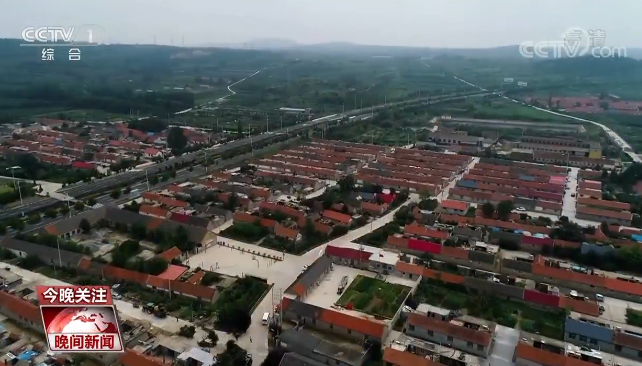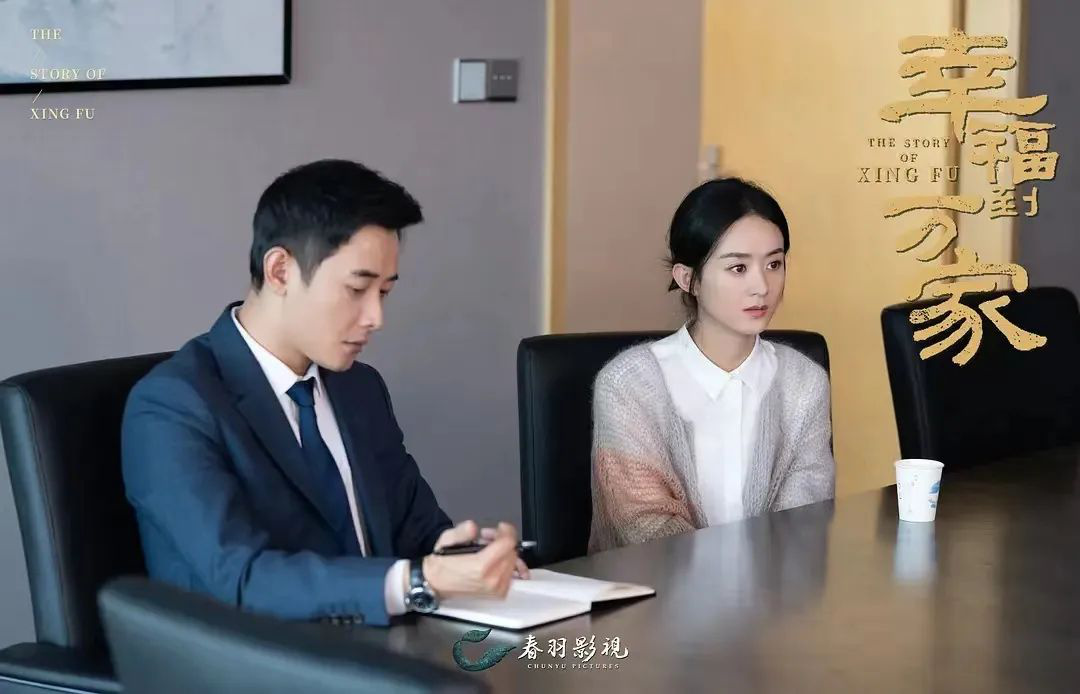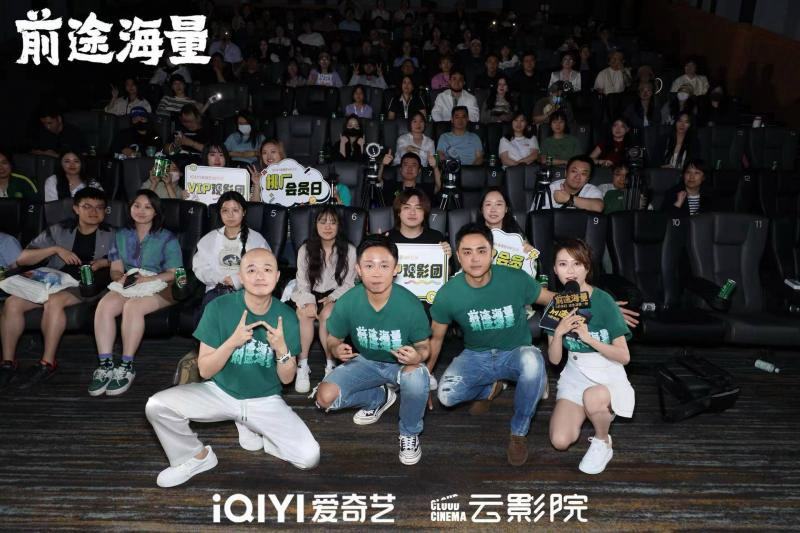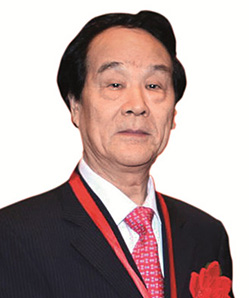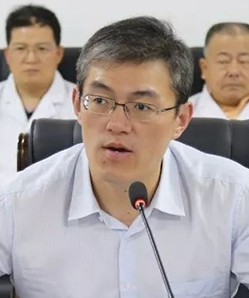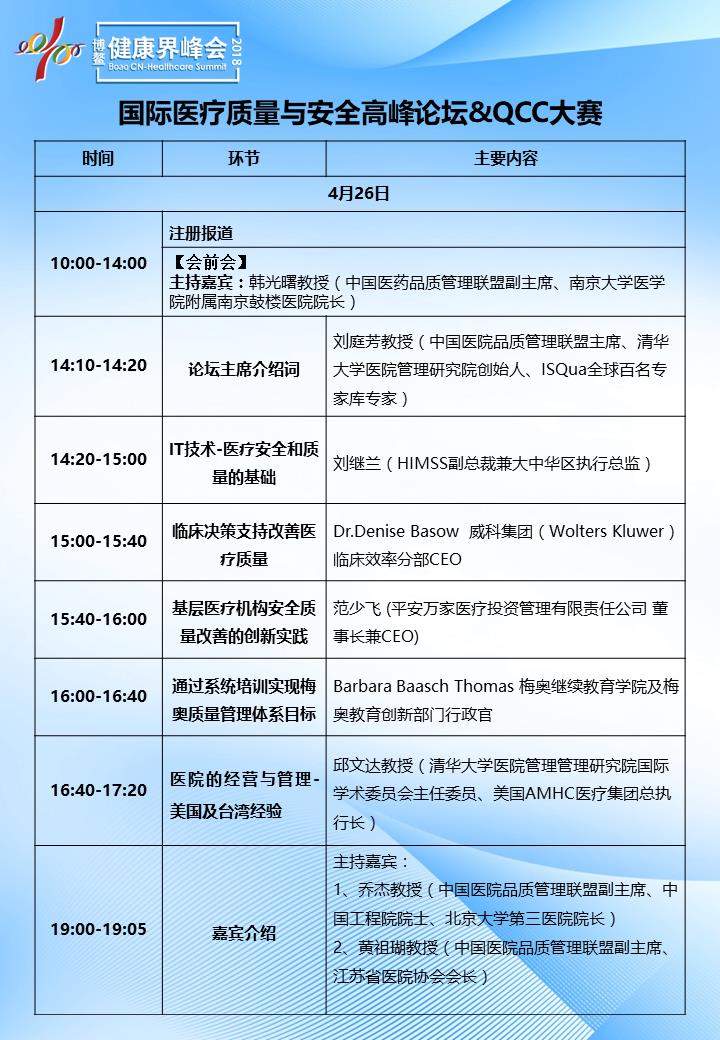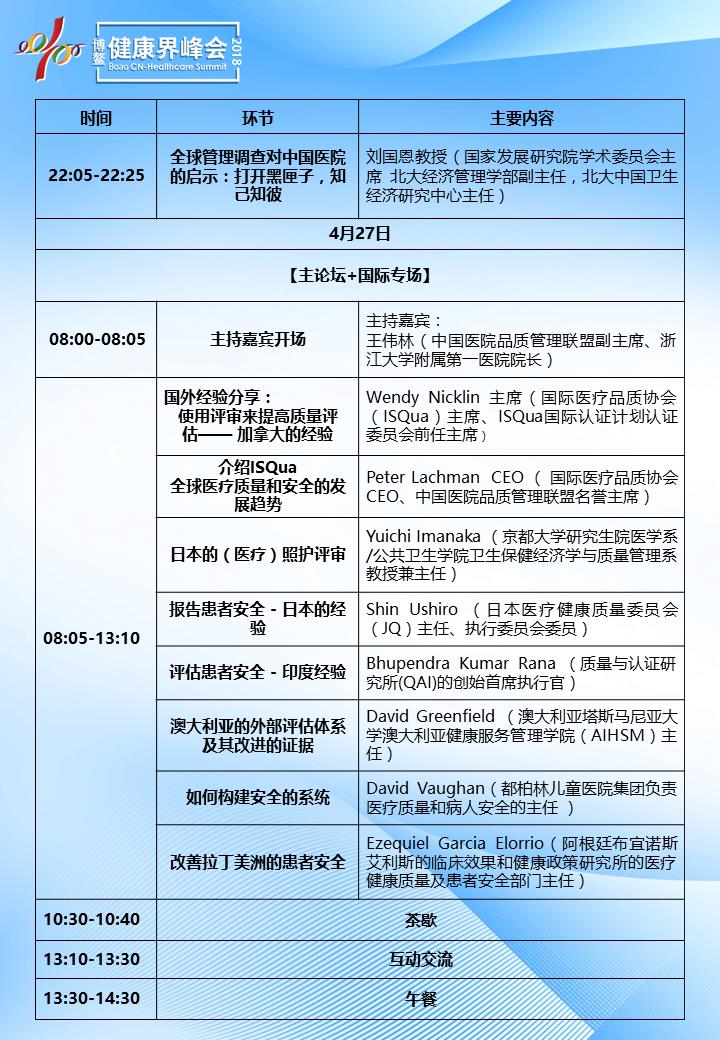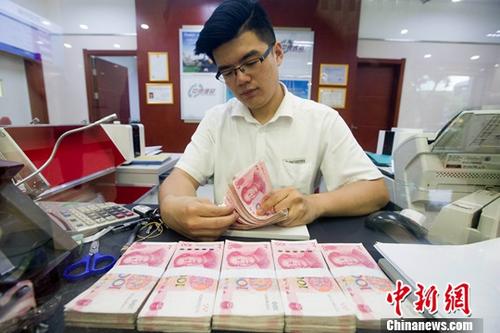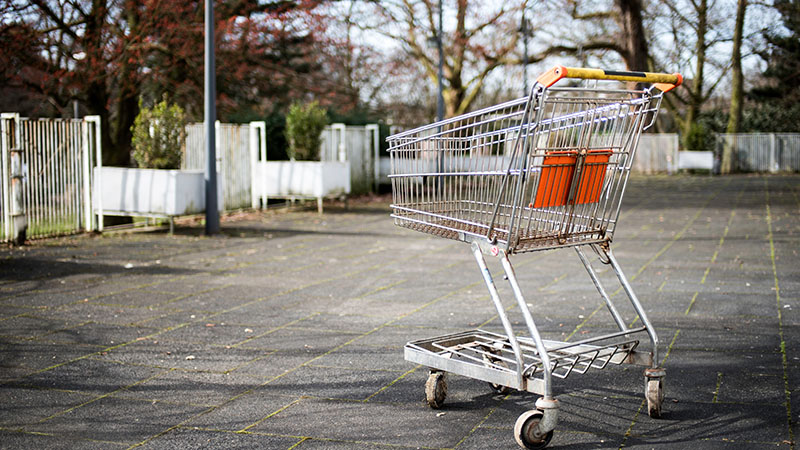
At present, social interaction is almost rotten. Any industry will add a social element, and anyone may say that I am a social interaction. So do you really understand what social interaction is? Do you really understand the nature of social interaction? In this paper, I will try my best to use the whitest and most concise language to explain my shallow understanding of the social industry.
Good question, no chance to breathe.
Personal understanding, socializing, stripping away all other things, the most core essence, in fact, is just one sentence,Socialization is time..
Well, I think someone will definitely refute me, cursing this guy xx in my heart. Why do you say that socializing is time? Let’s release it at the next level. Socializing is actually a process of communication between two people, and this process is not to pay time. Don’t tell me you’re a Nami buster. Touch the antenna. Over.
As mentioned above, socialization is the process of communication between two people, and why should we spend this time to do it? Remember that human beings are relatively dark animals, and the so-called unprofitable can’t afford to get up early. Well, what human beings do is basically purposeful, and the answer to this purpose is actually quite simple.To get the same amount of value exchange.
What is value exchange? Take a chestnut as an example. I am a student and you are a teacher. The social behavior of the two of us is in class. I spend time in class and you spend time in teaching. My value is RMB (tuition), and your value is knowledge in my stomach. I exchange RMB for your knowledge. In the course of class, time is brushing away. Isn’t this social? Please raise your hand if anyone else doesn’t understand.
In general,Conventional value exchange includes the following: interest exchange, concept exchange, value sharing, food, loneliness, social factors, life needs, finding a sense of existence and so on.
In a word, socialization is actually a process of "trading" with each other, but this "trading" is not a concept with ordinary "commodity trading". More is equivalent exchange. If one party can’t make the other party feel that our value exchange is balanced and cost-effective, it will also break the social balance, resulting in social loss.
This time, you can understand why money is everything. Money can exchange anything for you, so you won’t feel unbalanced, and you can maintain a long-term social relationship.
This formula, which I learned from previous lectures, is almost as exquisite as the mass-energy equation.
A+B+T=R
To explain, A is one user here, B is actually the other user, T is the time, and R is the reward. Continue to release, you can get the following formula:
Personality (advantage)+interest (demand)+time commitment = return.
The A-side is everyone’s different personality, which will be his advantage. The advantage of personality is similar to the assets in the physical transaction process and is your bargaining chip. For example, I am handsome, I am beautiful, I am brilliant, I am humorous and so on.
B-side is people’s interests and needs, that is, the general social sponsors. For example, I want to see beautiful women and listen to stand-up crosstalk, which is my demand, and the advantage of a user at A-side is that it conforms to my aesthetics and beauty! Then cut the crap, let’s get it straight, and B will start hooking up with A, and naturally social relations will be formed between AB (there is nothing you can do if A ignores you).
The intermediate process of combining personality advantages and interest needs requires the investment of time, energy, money and other elements, that is, cost. Everything is based on social time. You have to spend time thinking about him and spending money. This is the social process. In short, this is the essence of social interaction.
After the process of socializing, there is a reward. This bonus return means that one party is cool and the other party is high. Maybe it’s a win-win situation, maybe it’s a single win, maybe one wins more and the other wins less. Judging from experience, it is possible to maintain a long-term social interaction when the two sides reach a static balance. Unilateral repression will generally not have a good result (the same is true for love).
On the whole, the normal and stable social behavior of human beings is produced through such a formula.
Are there any exceptions?
Yes, not much. For example, love at first sight, in fact, is that both ends have become one end, how to understand, I think (deserve to be single for 10 thousand years)!
Two perspectives that will remain unchanged for ten thousand years:Spiritual or material rewards.
The spiritual reward is more about satisfying some of our needs physically (with a wry smile), and at the same time, psychologically, it will bring you continuous satisfaction such as vanity, existence, curiosity or belonging, which is the main thing, and there will also be spiritual rewards such as satisfying knowledge and information exchange.
The material rewards are relatively simple, such as cars, houses, money, etc., as long as you can touch them in reality, you can do it.
Judging from the routine in previous years, material rewards are often more attractive to users, but at the same time, it is more difficult. Spiritual rewards also started a concentrated outbreak last year, which is represented by similar high-quality original articles, people from below, and so on.
Relationship chain, information and interaction.And social behavior, fundamentally speaking, is also composed of these three.
The production of information will promote the interaction between users, and the interaction between users will directly affect the establishment of the relationship between users; This will lead to new content.
In the social category, it refers to the nature of interaction between people. It lies in three aspects: the establishment and maintenance of the relationship chain between people.
The main purpose of relationship chain is often to obtain the potential future value of social interaction.
In the social category, it refers to the content information flow. It lies in three aspects: production and processing of content, presentation form and consumption. And the content itself has qualitative and quantitative attributes.
Paying attention to content-based socialization is often to obtain a certain content or consume a certain information or content at the moment.
In the social category, it refers to the way people interact with each other. According to the mechanism of interaction, it is divided into conditional interaction and content interaction. There are one-to-one, one-to-many and many-to-many interactions in the participation mode. And realize that interaction needs media.
Interaction as the main purpose can often relieve boredom, enhance self-worth and get rich emotional and psychological experience in return.
Socialization is time, and each product actually takes up your time, but some waste your time, and some save your time. So, Internet social products naturally came into being.
Looking at the whole social process and combing the core key points, we can see the following:Breaking point, breaking ice, relationship chain, community, quality control, stickiness, transformation, profit, reciprocating, nothing more than this.
As the name implies, it is the core point of your social platform to attract users. Remember that it is best to have one or three points.
The social products visible in the market must be very large in some way, which will lead to a large number of users pouring into your products, and this kind of demand amplification is often the rapid amplification of common needs in life, which will produce such an effect.
But it will also lead to some catastrophic problems (as mentioned below).
Imagine that a user was fooled by you and wanted to play this game. As a result, when he came in, he saw that there were n points on the platform. After looking for a long time, he didn’t find the point that attracted him, so why not lose it?
There are too many explosions in history, such as the free SMS of WeChat, the map socialization of Momo, the interest socialization of Same, the acquaintance socialization of Facebook, the teasing style of xiaokaxiu, the new mode of exploration, the burn after reading of Snapchat, etc., which are listed as much as possible after the article, so I won’t go into details here.
There is no problem in ten thousand years. If you initiate hook-up unilaterally forever, the response rate of the other party is extremely low. In some cases, this low is fatal, and many platforms are just Over.
In fact, there are countless factors involved here, such as social hooking skills, platform matching accuracy, mood of both parties, etc. The social scenes of each platform here are different, and the social explosion points are different, so it cannot be generalized.
The only thing the platform can do is to match the hardware conditions of both parties as accurately as possible, and the platform can do nothing about people.
After successfully breaking the ice, the two sides actually established a relationship chain to some extent, and the establishment, maintenance and development of the relationship chain is a social problem.
Establishment is the process of breaking the ice, and how to maintain it better is also an intuitive life and death on the other hand.If the success rate of the platform is very high every day, but all the platforms are transferred to other platforms (you know), this platform has actually become a tool for "purchasing goods" in the minds of users.It’s still a little scary, isn’t it? But it’s true. How to solve it depends on the community.
The development of the relationship chain is actually more related to the life time of the platform. The more intertwined and deeper the development, the longer the survival time of the platform, and the more secure it is as time goes on. With this solidity, it will be relatively easy to realize profits.
Another 10,000-year-old problem, what is the community? Personally,The community is actually a small post bar, which takes the points of interest as the core point to aggregate the users on the platform through the points of interest.It’s that simple? Yes, it’s as simple as that, so why is it a perpetual problem?
The quality and quality of the community almost determine the lifeline and trend of the whole platform. The relationship chain between individual users is life and death, and the community relationship platform between multiple users is the lifeline.
Although the community is important, it is useless to blindly ask for more. Look at the current WeChat and qq. How many communities are dead? If the community is alive, the platform will smell, and if the community is dead, the platform will be dead (this is also the reason why the circle of friends exists).
Where is the top community at present? I think it’s Baidu Post Bar. Some people say it’s not Douban, Tianya or something. Pay attention to my adjective, top class, instead of community quality.
At the beginning, Post Bar was a typical blue hyperlink, big frame, replying to the post and cursing the street, and then Post Bar declined more and more. I think the reason is that people’s time is more and more occupied by other emerging products, and the quality of Post Bar is low (some, at that time, unspecified), and it is not driven.
As time goes on again, Post Bar has changed its skin, invited several designers, and the style has become taller, but the model is still the same. The difference is that it has been integrated into many Internet thinking and closely combined with fan content. It has been pulled up from the bottom, and it has become the most active, comprehensive, largest and professional social platform in China. Slogan has also become a post bar to find an organization, and the organization is just a point of interest, just like before.
The importance of community is closely related to the value it brings. It can promote activity, stickiness, realization, screening content and production content, etc. Every high-quality community is actually a small independent country., have their own laws and regulations (bar rules), the boss (bar owners), the younger brother (management), ordinary people (users), scum (blacklisted users), spiritual food, beliefs, almost everything. Run the community well, to some extent, the whole platform, you can safely hand it over to them for the whole, round after round of regular user iteration, almost no dead end.
Of course, keep your head alive, don’t chew on a thing, think about Kaixin. I don’t know how to change and keep pace with the times, but I’m sorry I have to be abandoned by users. However, there will still be a special case, that is, our Baidu Post Bar. Baidu is a magical company. After winning the first export of Chinese Internet, almost all the first-hand resources will be diverted into its own products, so I don’t know whether this model will still be alive and well even if it is posted 100 years later (if Baidu is still there).
Quality control and disassembly means quality control, and there are several directions, such as platform manual audit, machine screening, sampling inspection, reporting, etc., but personally, from the perspective of platform,, the most time-saving and labor-saving and the best effect is to use the community, which is equivalent to hiring a lot of younger brothers who don’t spend money to keep an eye on you. Why not? And they are all professional, at least more professional than you, and their quality control should be better than you.
Increasing user stickiness is also related to many factors, such as user quality, content quality, profit point, word of mouth, number of users, etc.The easiest way to improve stickiness is the magical community. Cooperate with the operation means of the platform to further expand this effect.So you know how important the community is.
If you have crossed so many barriers before, congratulations, you have almost seen the sunshine of victory.Or through magical community means, the quality of platform users and content has been successfully improved, and the constantly generated new content and new users have become fresh blood. The lower level has independent users as the main support (of course, there are many side details, which will be described later), and the upper level has high-quality communities to help maintain and screen, and the users of the two levels will continue to be alternately transported (inactive users are kicked out), which has become a more successful social system.With this positive development, your market influence will gradually expand and the number of users will gradually increase. What you need to do is to firmly grasp the top community of the platform, and it is time to add some profit points appropriately.
This problem has multiple profit models according to different scenarios, purposes, platforms, etc.However, looking at the current common profit models, there are nothing more than traffic realization, value-added services, membership fees and commodity sales. The first two are almost the profit points of the current mainstream APP, not to mention.
Membership fee is more interesting, as if it was specially bred for social platforms. The premise is that you control the quality of platform users and the quality of content (poor). Only in this way can users join willingly and pay for it one after another, but this risk is also the biggest, and it is very likely that users will abandon it from now on, so consider it carefully.
E-commerce platforms are the most popular for commodity sales, but I think that through community or analyzing the attributes and preferences of independent users, we can make vertical commodity recommendations and earn CPS fees. If the algorithm is proper, maybe this can become the main income of the platform. However, if you use it with caution, it will annoy the user, and it is also possible to uninstall it in minutes.
After the profit is completed, it is actually a complete social platform process. You can return to the relationship chain to optimize and explore again, or you can continue to focus on the community, constantly reciprocating, constantly changing, and constantly making profits. Of course, the wishes are always beautiful, and the reality is always cruel.
- Respect for human nature: high efficiency, excitement, interaction, concealment, etc.
- Good products: product design+business model+promotion, etc.
- Good team: strategy, operation, execution, etc.
These three points have been brought into full play, and I personally feel that there is no one after WeChat.
It’s light enough (efficient), it’s interesting to shake the drift bottle (exciting), the brush in the circle of friends is ok (interactive), the news can be ignored (hidden), and the second and third are not mentioned. It’s obvious to all that there is a boss in control.
The mobile Internet has brought social networks into a new stage. About gun artifacts, photo artifacts, interest groups, and various content sharing; Social applications are currently classified into different categories.According to the strength of the relationship, it can be divided into acquaintance socialization and stranger socialization, and it can be divided into various vertical social fields according to the field, and it can also be divided into pictures and videos according to the information bearing mode.And it also has a great relationship with social motivation, which is diverse and changing. Identity, background and different situations play different roles, and the motivation of social interaction is different. What we can grasp is the essential needs of people.
Facebook is a social graph based on "I know U", but in the later period, due to the small user scale (think about how many people you can know in reality), Facebook studied various models to bring together users with the same interests or excitement, so that such a large user scale was produced. In fact, this is also related to Facebook’s own observation of user retention, preventing users from losing too quickly, and the 521 principle are not discussed.And Facebook is simply the most awesome existence of Internet social interaction. At present, almost all social interactions are based on strangers turning to acquaintances, while only Facebook is based on acquaintances turning to strangers.Of course, there are also some in China, such as a game (ren) investment (ren) network.
Wechat, acquaintances have to mention WeChat, and WeChat is actually based on the early users led by qq. Tracing back to the source, qq was originally based on strangers, but it may be a bit far-fetched, so it should be classified as acquaintances, and it should not be humiliating.
At the beginning, WeChat focused on "free SMS", followed by the voice message function, which immediately improved the communication efficiency and enriched the communication scene. Then "people nearby" and "shake" appeared, which broke this closed field and began to communicate with strangers. Later, a circle of friends appeared, and people’s information began to settle down. Later, WeChat official account appeared, and WeChat official account was divided into subscription number and service number. At this time, WeChat began to attract enterprises, communities and larger media. Since then, WeChat has achieved explosive growth, and then laid out the red envelope function, with the intention of paying on WeChat, paving the way for commercialization, content subscription and offline.Every time I think of the whole process, I can’t help but feel goose bumps. With such a clear line, who dares to say that the success of WeChat is accidental?
Light interest+light socialization
Classify the content (pictures, videos) published by users with tags, and then push/guide the personalized content to users with interest tags as the index. Some applications will be completed in the form of user-defined labels, while others will be matched by background algorithms.
Provide users with all kinds of labels. This work may be completed when the user uses the application for the first time, or it may run through the whole software operation process.
Light interest+heavy socialization
Combining with LBS, we continue the fine traditions of Post Bar, Douban Group and QQ Group, and create multiple interest groups under independent application. Online dialogue plays a supporting role in organizing offline interest activities.
Pay attention to interest+socialize
Focus on a single interest keyword, and build a high-concentration interest social platform for users with specific needs around this theme.
I won’t give examples of products here. There are eggs at the end of the article and they are displayed there. If you want to see them, you can just look at them directly.
As for the relationship between users, due to the penetration of the Internet, in addition to establishing a relationship accident among users in various ways, we must start to develop a new relationship, which can be called "sub-relationship". Sub-relationships here refer to those who, for ordinary users, do not need to identify others, but only aim at obtaining a certain content or generating an interactive behavior. That is, I don’t need to know who you are, what your identity is and where you are; Just get the results I want.
Information production needs to be further emotional, intelligent and personalized. People’s emotional demands need to be captured and satisfied through more emotional design. And people’s rational demands need more intelligent design and experience to realize.
For the interaction between users, we need to borrow more new media. New intelligent hardware devices are fully utilized to realize remote multi-dimensional interaction of users or to simulate physical interaction. At the same time, the use of some biotechnology may have different effects.
A very classic and disastrous example, friends who are engaged in social direction should have heard it more or less.
As mentioned above, after the explosion, the problem that may be faced is the influx of a large number of users. Some people say that this is a good thing, but I don’t think so.
The gun artifact "Mo Mo", now that everyone mentions it, still thinks it is a gun artifact. In fact, "Mo Mo" had a very stable pyramid structure at first.
- Taki: At the bottom of the pyramid are the so-called diaosi users, diaosi men and diaosi women;
- Middle level: there are high-quality users in the middle, especially women (one high-quality female user can bring seven male users);
- Spire: The top ones are some big V’s and Gao Fushuai’s.
The pyramid has been put up. At this time, the pyramid structure is quite stable, and its internal ecology is balanced. However, all the bottom diaosi users will continue to chat up and pursue the high-quality users in the middle, satisfying their vanity. High-quality users in the middle can screen out the top-level Gao Fushuai, which is equivalent to the role of blue chip stocks. Users at the top will find that there are really many girls with high value and good figure around. Then overnight, the reputation of the cannon artifact spread, which can make the nearby hundreds of meters become 5 meters below zero.
As a result, many diaosi users poured into this application. With hungry eyes, constantly say "about" to the middle quality users? About … ". After such a long time, this behavior changed from "pursuit" to "harassment", and the cost of screening for high-quality users became higher. For them, the value of this product was not so high, so they began to flee. At the same time, there are women who have slipped or special occupations, such as wine trays, rice trays and princesses in boxes. The value of socializing has changed. Gao Fushuai, at the top, realized that it was inefficient to meet high-quality women, and Gao Fushuai users began to lose, so the pyramid began to lose balance and collapse.
When the rules of social products can’t restrain its massive users, it will make its ecology out of balance.
Then the question is coming. If I were the product manager of Momo at that time, how would I solve it?
Momo is really having a hard time now, and the process of whitewashing is very painful and long, and it has also invested a lot of money, and the effect is still good.
Among the two unequal classes, the daily limit is limited. If the limit is exceeded, you can directly guide the payment. Please note that it is in the unequal classes, such as diaosi, which is of high quality. And diaosi chatting up diaosi is still unlimited.
This not only controls the trend of one-sided user interval, but also carries out appropriate liquidation test, and the order of the bottom users is also very large, so the risk is controlled within the controllable range to solve this problem.
Of course, the problems and risks are still there, and the test can be gradually confirmed and explored (it seems that I also voted for Momo’s resume at that time, but I didn’t have a phone call).
This should be a hot topic recently, but I think there is something wrong with the logic of this sentence.It’s not why Alipay wants to socialize, it should be "why Alipay has to socialize".
It seems similar, but it is not. The former is active and the latter is passive.
It is not difficult to see that Alipay has become the top APP in the current installed capacity of mobile phones.It is not how sticky it is, but that Alipay is just needed. Under the cover of such a huge volume of Taobao, Alipay is the only payment method, and its volume is already obvious.
Such a simple question can be seen by people like me. How can Ma Yun’s father not see it? Once users just use you as a tool, even if you just need it, there will be risks. Although this risk is not even a little bit at present, it is all about the Internet, and it is changing rapidly, especially the e-commerce. Today, Taobao is the only one. Who can prove that Taobao will not disappear after ten years, so it will disappear with Taobao (after a hundred years? ) and the decline of traffic (perhaps in the near future) lead to the direct problem of Alipay’s decline, and in order to prevent the worst result from happening, we have to move the big move to Alipay in an attempt to maintain users.
Then why not put Alipay’s social function into the current Taobao?
I think this question has to start from the scene. First of all, Taobao already has social activities, right, such as Wangxin and Ali Wangwang, but the scene is a communication tool for buyers and sellers. Although it is also social, the added value is not great. Taobao also launched the function of asking everyone last year, which is also a social interaction in the form of question and answer. This is not an instant social interaction, which is beyond the scope of this article. Looking at it in detail, Taobao has launched Taobao live broadcast, and live broadcast is also a social means. Taobao is also in the experimental stage, and it is unlikely to become Taobao’s social main force in the short term, and its position on the home page is relatively backward. Community, which was vigorously promoted last year, is still a shopping scene because it is all about goods, not people, and it is not an instant social interaction. The mode of community social interaction is also different from the traditional understanding. To sum up, there are only four reasonable social ways at the moment, and only Wangxin is the instant social and shopping scene that users understand.. The fatal problem is that this social scene is actually under the wings of business, and it is almost impossible for users who get from this scene to transfer to real life or to traditional friends. So it is not difficult to understand why Taobao has to socialize.
So why do you have to put it in Alipay? As I said before, theoretically, the installed capacity of Taobao and Alipay should be approximately 1:1, and the installed capacity is very large, so both sides are the same starting point.Wangxin in Taobao cuts strangers socializing, and the scene is shopping. The social interaction in Alipay cuts acquaintances socializing, and the scene is similar to WeChat.
That is to say, it is a passive prepayment. Assuming that in the foreseeable future, Taobao disappears or Ali transforms to do something else, Alipay can still exist in the user’s mobile phone, and it is also a good choice as a daily communication tool.
In fact, it’s okay. From the user’s point of view, it doesn’t matter which platform is available, easy to use and useful. However, the advantage of WeChat is huge, and Alipay has to come up with some new products.
At the beginning of the year, the gathering in Five Blessingg was really an anti-God activity, and I was deeply impressed.
E-commerce socialization and community, can it really be useful?
The answer is obvious and certainly useful, otherwise what else would he do?
At present, there are two markets that do best, but the scenes and means of these two companies are different. The first is Taobao, a community model, and the second is JD.COM, a shopping circle. There is nothing to say about the former. The traditional community model, which clusters users with goods, increases the stickiness and activity of APP users, and leads to purchase behavior by giving hands to points, is a more conservative and traditional practice, which is beyond reproach.
JD.COM, this is interesting, and there are many articles on the Internet, so I will briefly introduce them. The shopping circle is an entrance that JD.COM left on WeChat. After shopping, users can directly share the goods in the shopping circle from JD.COM Micro Store, and the shared goods can be seen not only by friends but also by other users.The point is that this other user, WeChat or JD.COM, has not given any details about how this other user was screened out.
Personally, I guess,According to users who have the same purchase behavior, JD.COM conjectures everyone’s preferences and essence through WeChat combined with general life scenes, and matches the connection through algorithms, which is the selected module.What’s interesting or scary about it?JD.COM connects shopping social scenes with life social scenes. He knows your life preferences or related labels and can recommend them to you according to your life thoughts. In this case, it is far more terrible than Taobao’s independent community in terms of human nature and success rate.I don’t know how far WeChat talks about data sharing. If the authority is very high, I have to say that JD.COM is a scheming boy.
If this is done well, it is not impossible for JD.COM to join hands with WeChat to surpass Taobao. Why do I make such wild remarks? No, I only speculate from the current market and human nature, or it may be nonsense.
Last year, Facebook acquired Altas, a veteran DMP.In addition to online data, there are also some offline data, including the transaction data of some users’ credit cards, which helps Facebook to build a high credibility of the number of users and provides online and offline complementarity.
About 97% of Facebook’s revenue is contributed by advertising. The horror is that the company’s growth rate is as high as 40%+(Q1 in 15 years), which is four times that of Google. If this continues, Google will be overtaken by Facebook’s advertisements, and the fundamental reasons for all this are different from the fundamental principles of advertising.
Google is passive, Facebook is active.
What is passive? When you search, it has nothing to do with yourself, but it has something to do with your search behavior, that is, there may be conflicts between the two. For example, if I search for toys, it is very likely that I just want to look at them and don’t want to buy them. If it is in CPS mode, there will be no income and low efficiency if there is no purchase behavior.Active display has a great relationship with you. Daily browsing and people’s preferences are recorded, and according to the advertisements displayed by these things, you can not be creepy.
So Facebook is already a good example, but he only advertised, and WeChat is similar to Facebook, but he hardly advertised, and turned to another profit model, joining hands with e-commerce, sharing data, recommending advertisements based on people, and attracting money.In fact, there is another problem, that is, the habit of users buying on WeChat has not been developed in a large number (compared with e-commerce platforms such as Taobao), so this is why it can’t be done.
JD.COM’s main APP has no action for the time being, only a simple discovery function, which is far from the related scenes described and the current products. What’s more interesting is that the shopping habits of users in JD.COM APP scenes have actually been developed, so it is not difficult to think about it.If JD.COM APP is a community, using the user data shared by WeChat, combined with JD.COM’s own purchase behavior, it will be more interesting to push and match accurately and directly hit your heart.(Taobao’s community is also completely based on your search behavior, and to some extent it is not equal to this ideal model).
The pit is coming, and the pit is coming. Simply talk about the pit you saw or encountered.
Represents the scene, marriage and social intercourse. Marriage and love are represented by companies such as Lily, jiayuan, Zhen ‘ai and Youyuan. Why can’t we say that the more we see, the better? First of all, if you are a man and want to chase a girl, do you want the whole world to see this girl? Certainly not. If you do, you may have two choices, one is to chase and the other is not to chase. From a mathematical point of view, the probability of both is the same. If 100,000 people see the girl you like, theoretically you will have 50,000 more competitors. I will go and think about it.
Secondly, from the data point of view, the users of this social platform for marriage and love are older, so I have to think of one thing, that is, I can’t let acquaintances see me on this platform. If others see it, it will be a shame. In fact, the two kinds of hearts are contradictory. He wants more people to hook up with him, which is bound to be more display, and he doesn’t want more display. This is one. Second, the average user wants to see the dynamics of the person he likes secretly (students in Weibo who have a secret crush can go to the side wall), and that person certainly doesn’t want to expose himself too much, so there are so many things, how to strike a balance is what you should do.
What is less refers to the function of the core highlights. Remember what it said about the explosion point,Functions must be few but refined, refined and beautiful.There is also a trade-off balance problem.
For example, looking at the face and chatting with the brand, this is a very light explosion point, which is supposed to be good, right? It backfired. Why? I used to order about a week in a row, about a hundred a day. According to the final statistics, there were about 20 pairs, about five or six replies, and one conversation with more than ten sentences. Did you turn to WeChat?You are a social platform, I am a hunter, and the prey is not allowed to be touched. What do I need you for?So it’s also a question of balance. It’s up to you how to choose.
Scope refers to the social scope. Recently, I saw a global platform for making friends (except China), which was made by Chinese people, and one problem that Chinese people don’t care about is a fatal problem abroad, that is, religious belief.
If you are a global platform, then these two problems are often the most easily overlooked. Remember, you should never joke about them, which is fatal.
What do you mean, profit points are all dead. Otherwise, profit, yes, no one is stopping it,But the profit model that individuals admire is the profit model to enhance the experience.For example, you can only use a static avatar, and you can use gif after paying (don’t be serious about the example I gave), which is called the profit point of improving the experience.
And some platforms put the profit point to the point of death. 51job, a recruitment platform, is also a social direction to some extent, right? And his family has nothing to die for,That’s my resume. It depends on who reads my resume and wants to open a vip. Ten thousand alpacas fly by in my heart.Did someone say anything wrong with this? Well, I have to ask you out for this. Die,Just as he stuck the basic functions that the website should provide to the point of paying, I submitted my resume to see who read my resume. Isn’t this the basic function that should be provided? Once you have blocked all the basic functions, it is not far away for users to run away.Imagine, if Baidu’s search, every time you search for 1 cent, open a free search for 10 yuan a month, you will die.
If Baidu adds a profit model, such as paying 10 yuan a month, the commercial promotion will not be displayed. I believe that there must be a group of paying users, which will not harm the interests of non-paying users and will not affect the basic functions. Users may be happy to give you money. Why not?(unemployed ing Baidu gives an offer)?
What’s more, I have knocked so many times before I know it, so it’s not easy to list them. I recommend an article, and interested friends can look at "18 Common Ways to Die in Social Apps".
All right, all right, it’s over. I really appreciate the friends who have been listening to my nonsense for so long. Some opinions in this article may be wrong due to personal ability limitations and insufficient knowledge. Please also point out a lot and thank you very much. Thank you in advance.
Segmentation of current social apps:
- Minimalist/Instant Socialization: WeChat, Facebook, snapchat, Blink, Hehemo, FRANKLYCHAT, YO, flares, emoji.
- Anonymous society: shame white, friend secret, hug, yikyak, secret, whisper, crow, honey, whisper, ROOMS.
- Campus social activities: super curriculum, black and white campus, 11: 11, Notebowl.
- Pan-stranger socialization: Mo Mo, micro poly, Friction, Meeting, Mo Mo Da, skout, Badoo, Mico.
- Tinder class: Tinder, explore, right, Aloha, about you.
- Video socialization: Xiuse, yy audio-visual, micro-shooting, girls’ school, 9158, Netease CC (game+beauty live broadcast)
- Telephone/Voice Socialization: Neighboring, Talking and Chatting.
- Social interaction in the same city: beautiful date, love bar, secret chat in the same city, appointment today, simplicity, SAYHI, single online, cool chat.
- Couples socializing: little love, little love, QQ couples, love notes.
- Games/Entertainment Socialization: Bump, Stranger, LINE PLAY, Opposite, Youjia, Dada (Answer), love dare, Beibei.
- Semi-serious social interaction: heartbeat (interest matching), friendship (second degree) and friendship seeking.
- Marriage and social interaction: jiayuan, Cherish, Lily, Flower Field, Fate, Heartwarming Marriage.
- Social activities nearby: Sobrr, Whew, biu, FireChat, meetup, MISS, Crewe.
- Workplace/Business/Identity Socialization: LinkedIN, Pulse, Meeting, Friends, conspire, Business Card Almighty King (Join Socialization), Youshi.com, Haiding.
- Vertical social interaction: Wheels, Chexingren, ZANK, BLUED, GAYPARK, Lala Park, theL, Semi-dimensional, Dimensional, juju, gogobot (Travel Social), Friends Circle, Snowball Net, fanatix (Tournament), Dr.wine
- Barrage socialization: TUTU, trough factory, Acfun, Bilibili
- Picture/sound/text socialization: Snap, NICE, circle of close friends, tease, send a letter, half, mine, TOP, Personality Network, P1, tumblr, path, Pinterest, INSTAGRAM, frontback, tiiny.
- Group chat and socializing: pie, micron, group, and friends.
- Pet socialization: pets talk, walk, smell their nests and love night pu.
- Sports socialization: splash, cool, keep, mint
- Random Chat: meowchat, JiJi, Follow Meow.
- Literary socialization: Moment, Matchbox, Douban (various), Same
- Socialization of officers: invite you to dinner, make an appointment, and invite you to a movie.
- Q&A/Knowledge: Zhihu, Guoke, Quora, Brainly.
- Neighborhood socialization: NEXTDOOR, Dingdong Community
- Paid social interaction: pampering and quick appointment
- Female social interaction: Wei Mi, hot mom circle, big aunt, Yuanzi.
- Star-making/star socialization: holding silk, honey music and nebula
- Short video community: beauty shooting, micro-vision, VINE, 8PM, second shooting.
- Socialization of big companies: going back and forth, easy to trust, and bala (new Taobao makes buy buy buy same)
- Beauty Community Socialization: Goddess Project, I am not a goddess.
This article is the second article I output. In the next issue, I am going to write something about data (if I still have time). Click here to view my first article, Summary | Vertical Integration of Complete Product Lifeline Knowledge. Thanks again.
PS. The birth of this article is actually because of layoffs, and I have to come out to find a job again. Recently, I interviewed a good company, and the direction was social direction. Because I had done social pan-direction for more than two years before, I was lucky enough to get an interview opportunity. However, the interview was a mess because I was hospitalized with a fever a few days ago and was not fully prepared, and I didn’t engage in social orientation in recent months. I admit that I am not willing to go home and decided to sort out all the social things I had pondered before, which led to the birth of this article.
Wu Xing lady (micro signal mysterious 326531548), everyone is a product manager columnist. 3 years working experience as a product manager, with in-depth research on requirements, users and data. Welcome to exchange ideas and refuse to add friends meaningless.
This article was originally published exclusively by everyone as a product manager. Reprinting is prohibited without permission. Thanks for your cooperation.


